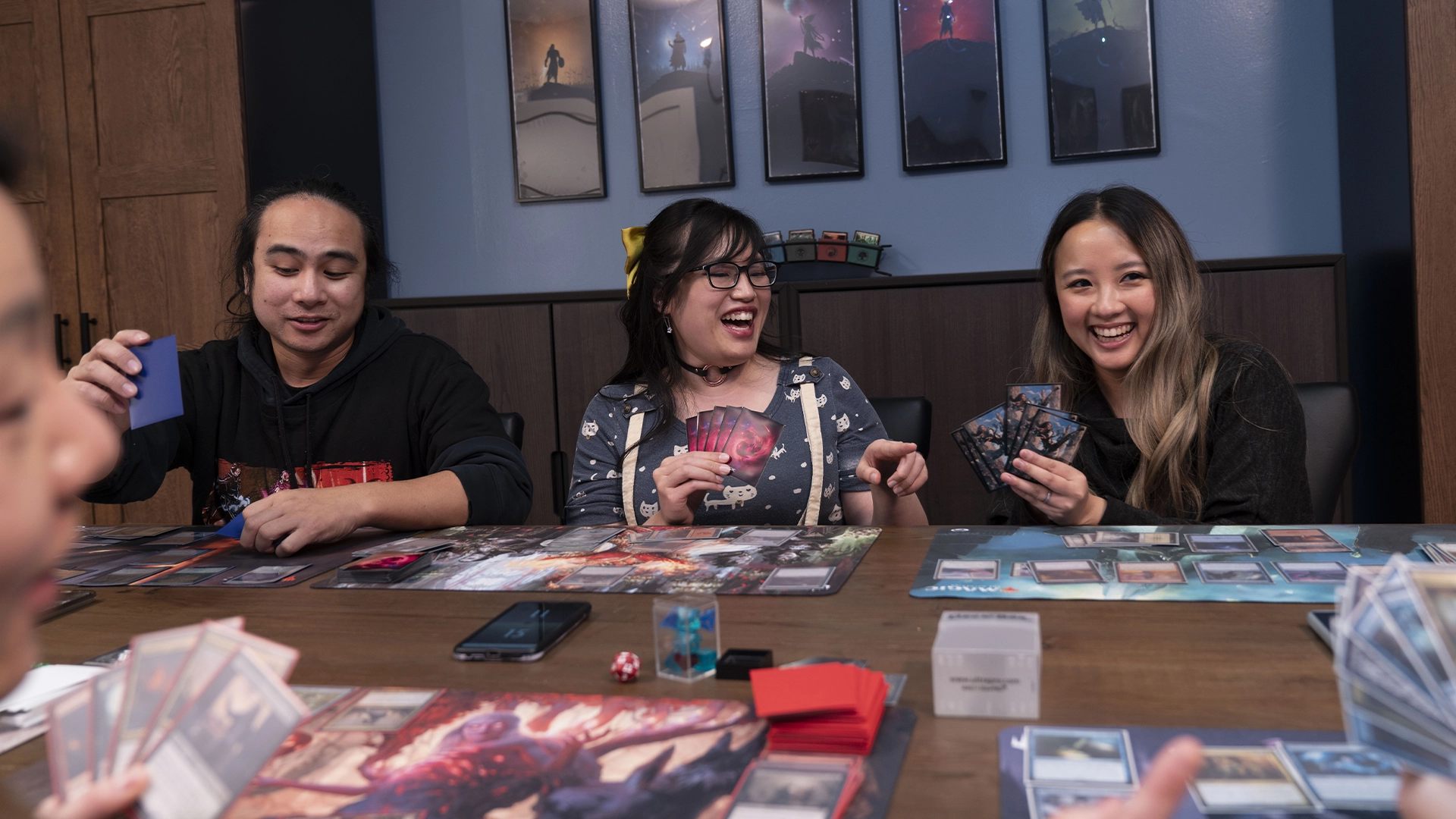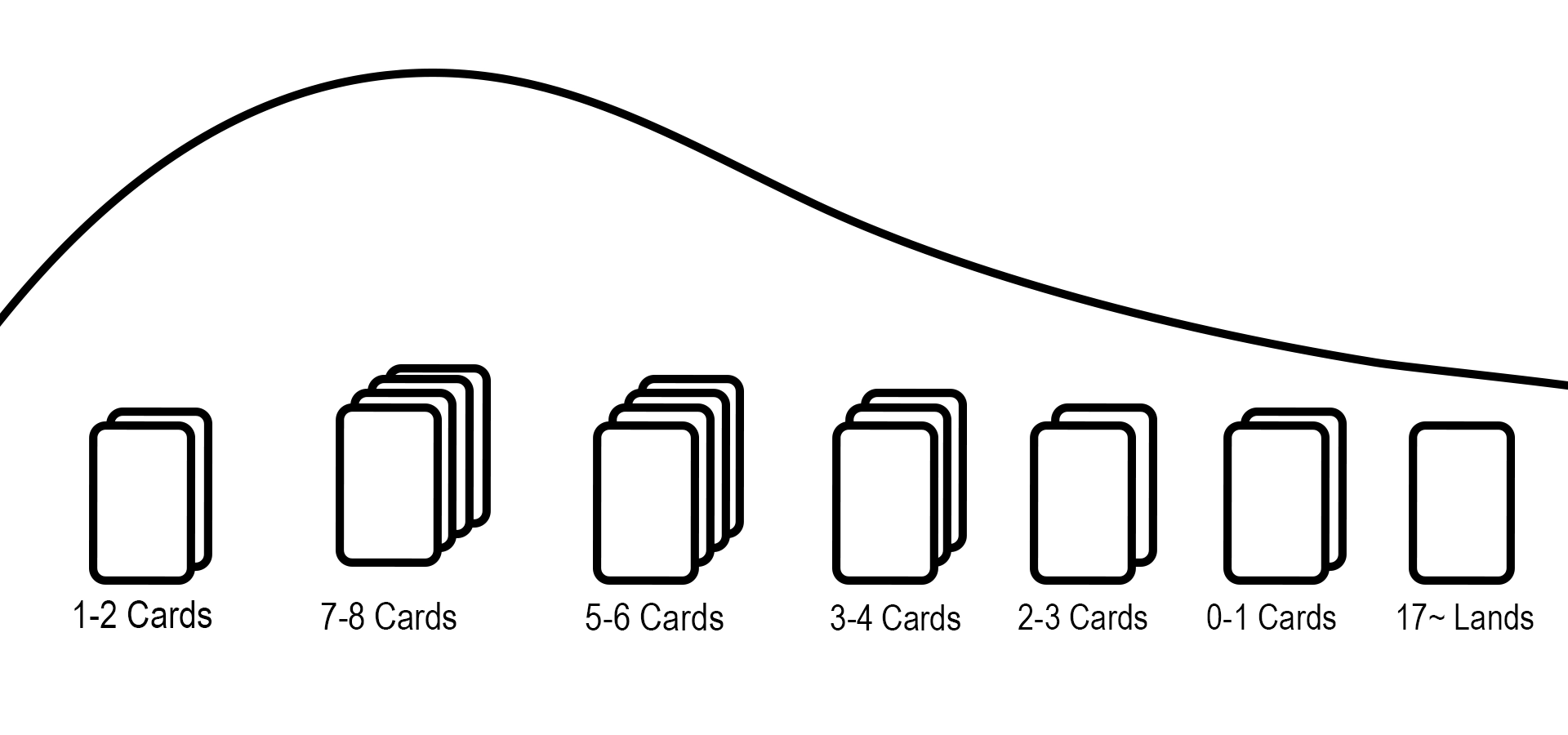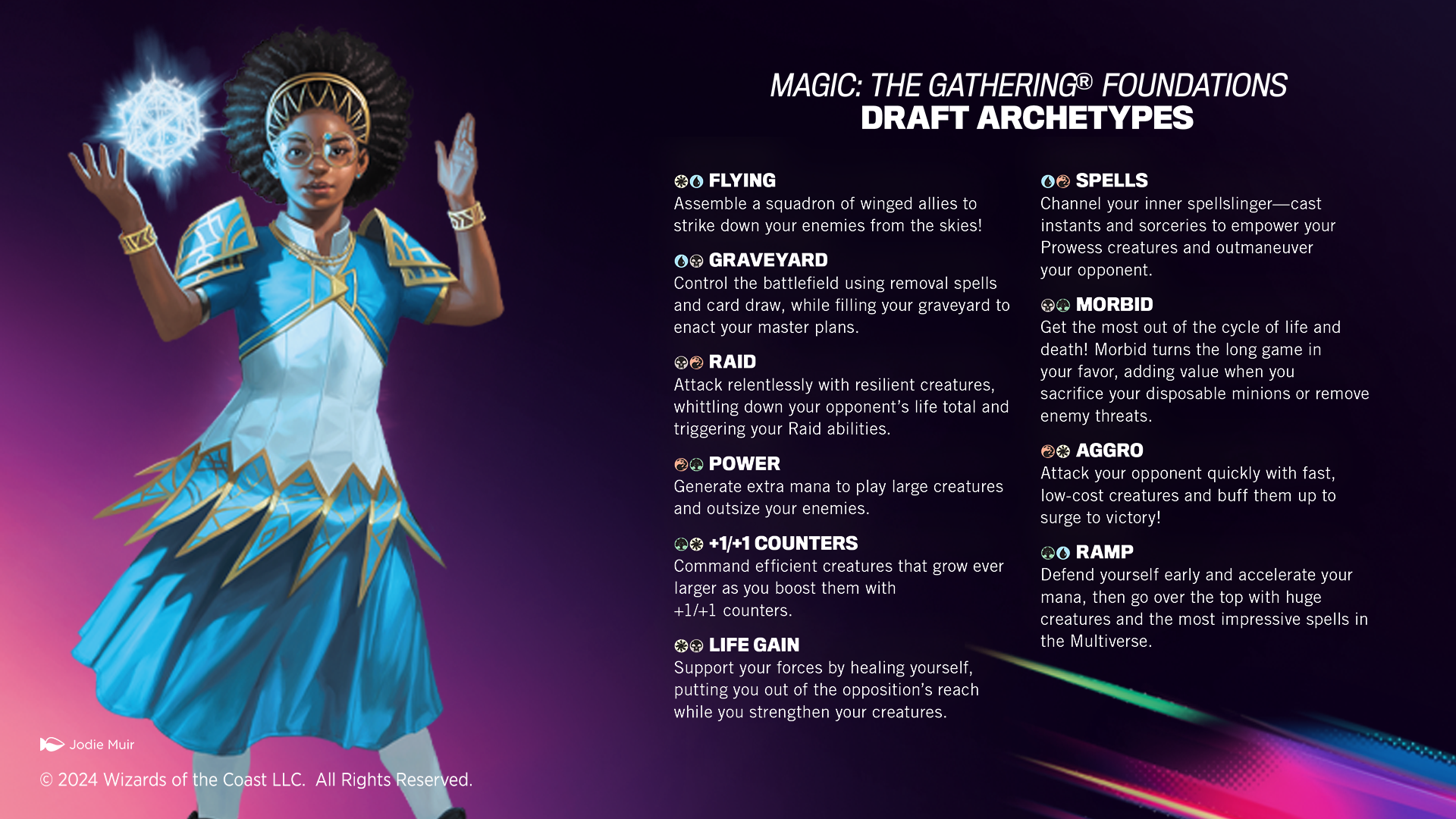Magic: The Gathering Foundations Prerelease Guide
The time has come to take your first steps into the world of Magic with Magic: The Gathering Foundations! This is the quintessential Magic release, encapsulating everything that players have grown to love about the game over more than three decades. Designed with the new-player experience in mind, there's no better time to join the worldwide phenomenon that is Magic. And there's no better place to engage with the game than at your local game store's Prerelease!

What Is a Prerelease Event?
If you're new to Magic events or new to Magic in general, Prereleases are one of the best ways to get to know the game while making new friends across the table. These events are aimed at introducing players to a new set's cards and mechanics and are low-pressure, friendly gatherings of people just looking to check out the set. Foundations is especially perfect for that kind of exploration-first attitude, with cards designed to kick start the deck-building process of any player.
Magic releases new sets of cards every two to three months, and your first chance to play with a new set is at your local game store's Prerelease event. When you register for one of these, you'll receive a Prerelease Pack on the day of the event containing the following:

- 6 Magic: The Gathering Foundations Play Boosters
- 1 Traditional foil year-stamped rare or mythic rare Foundations promo card
- 1 MTG Arena code card (available only in select regions)
- 1 Card storage box
- 1 Spindown life counter in five possible variations (shown above)
Prereleases are commonly run as Sealed Deck events. That means that you'll build a 40-card deck out of the contents of your Play Boosters, year-stamped promo card, and any number of basic lands, finding the best cards from the ones you opened and building a deck from there.
Building Your Prerelease Deck
Once you've opened up all six of your Play Boosters, start by sorting your cards by color. This will help you determine what colors you have enough of to play in your deck. You should aim to play exactly 40 cards. No more, no less. You can play more than 40 cards, but it's not recommended for most games of Sealed Deck, as it can prevent you from drawing your best cards sooner.
Next, look for cards that will help you win the game. A massive creature, a powerful planeswalker, or a devastating spell are the kinds of threats you should build your deck around.
Think of these as the grand finale of your deck, the cards that deliver an unstoppable blow to your opponent. Your green deck will want to play a lot of lands so Mossborn Hydra can quickly become a gigantic, trampling creature. Your white deck will want a lot of ways to gain you life so Exemplar of Light can draw plenty of cards and close out the game.
The second-most important part of your deck is removal, which means any spell that helps you get rid of your opponent's cards. These are the defensive elements of your deck, allowing you to survive opposing threats and cast your own haymakers. Each of the five colors has its own way of dealing with threats, either by destroying cards, preventing attacks, or otherwise stopping your opponent in their tracks.
Below, we've highlighted the most effective common and uncommon removal cards in each color. These selections are just a guide with the goal of giving you an easy-to-understand compendium of all the best removal in Foundations.
-
Magic: The Gathering Foundations Key Removal
-
White
Card Name
Mana Value
Luminous Rebuke 5
Make Your Move 3
Banishing Light 3
Stroke of Midnight 3
Blue
Card Name
Mana Value
Witness Protection 1
Imprisoned in the Moon 3
Aetherize 4
Bigfin Bouncer 4
Grappling Kraken 6
Black
Card Name
Mana Value
Eaten Alive 1
Stab 1
Hero’s Downfall 3
Tragic Banshee 5
Red
Card Name
Mana Value
Burst Lightning 1
Gorehorn Raider 5
Incinerating Blast 6
Abrade 2
Fiery Annihilation 3
Green
Card Name
Mana Value
Bushwhack 1
Bite Down 2
Affectionate Indrik 6
Reclamation Sage 3
Felling Blow 3
Deciding Your Deck's Strategy
Foundations is a simpler set than most Magic releases, so creatures are the backbone of sealed gameplay. Prioritize cards that destroy or exile creatures for a slow and subdued game plan …
Or come out swinging with a fast-and-furious deck that seeks to win as quick as possible. No matter what your strategy is, it should be supported by the key cards in your sealed pool. Build with your cards, not in spite of them.
No matter what cards you settle on playing, you'll want to pick your two best colors. This will give you enough cards to fill out your 40-card deck while ensuring you can cast your various spells. Each two-color pair has its own specific strategies, which we'll get to soon. For now, take all of your threats and removal, then see which colors stand out.
If you're new to this stage and are unsure what colors you want to play, here's a little secret …you can just play whatever looks fun. Prereleases are casual events that are about learning the ins and outs of the set. You might have more powerful cards in red and green, but if you opened a borderless copy of Omniscience that you really want to play, then go for it! It's the perfect time to let yourself just have fun.
Once you've settled on your favorite cards and the colors you want to play, it's time to assemble your deck! If this is your first time building a Magic deck, this might seem like an intimidating task. But don't worry, Foundations is designed to make the deck-building process relatively straightforward. Just keep a few of these helpful tips in mind as you construct your deck.
Mastering Your Mana Curve
Magic players have used a concept called the "mana curve" to ensure their decks can effectively cast their spells and work toward their game plan. The idea is that the average mana value of your cards should be around two or three mana. This is to ensure that you can cast spells at any stage of the game. Early on, you'll have very few lands to cast spells with, so you want plenty of cheap spells.
Over the course of the game, you'll gradually get more mana and be able to cast larger spells. While massive six-mana creatures might be what wins you the game, you don't want to draw those in the early turns of the game. These cards will be a small but mighty part of your deck.
This balancing act looks tricky, but Magic players have worked on this for years. You'll generally want to play 17 lands in your sealed deck, with 23 nonland cards filling out the rest of your 40-card deck. The general template for a mana curve looks like this:

- 1 Mana: 1–2 cards
- 2 Mana: 7–8 cards
- 3 Mana: 5–6 cards
- 4 Mana: 3–4 cards
- 5 Mana: 2–3 cards
- 6 Mana: 0–1 card
- and 17 lands!
Since your deck is likely two colors, a split of nine lands of one color and eight lands of the other is a standard distribution. If you want to be precise, look at the mana symbols on each of your cards and add them up. If you have fifteen red mana symbols and only nine green ones, you may want to lean closer to ten Mountains and seven Forests.
This outline is just a recommendation for how to build your deck. You might have several low-cost cards that push you toward a lower average mana value. Conversely, you might wind up with a more controlling, slow-paced deck that leans toward higher mana values. Whatever your deck may be, just keep these basic ratios in mind.
Foundations Draft Archetypes
Magic sets are commonly designed around a specific strategy for each color pair. In most sets, these are built around one or two general themes. For Foundations, the color pairs have been distilled into their most recognizable forms. For example, your red-green deck will be the epitome of red-green and prime you for future Magic releases.
Each color has a "signpost uncommon," which is a two-color card that plays into its color pair's specific strategy. These are great cornerstones for a deck, as they provide substantial rewards for doing what your deck wants to do. Once you know what each color pair does, it makes it easier to construct a deck that fits that strategy and predict what your opponent's deck might do. If you're curious about what those archetypes are, you can find them all here alongside some key cards to look out for.

White-Blue Flying 

Falcons, faeries, and feathered folk of all forms are the faces of the flying deck. Fliers are an easy way to get damage past your opponent's creatures, so focus on aggressive creatures that can close out the game. A card like Healer's Hawk may look innocuous, but a one-mana flier that gains life is just what this deck needs.
Blue-Black Graveyard 

Just because something has gone to the graveyard doesn't mean it's gone for good. Sometimes, dead is better when you're playing blue-black. Churn through your deck as you draw and discard cards. Then, utilize those cards you discarded with creatures like Dreadwing Scavenger or Soul-Shackled Zombie.
Black-Red Raid 

Charge! Barrel down on your foes with an unstoppable horde of red and black creatures. Several cards in this color pair have the raid ability word, which cares about if you've attacked this turn. This is one of the most aggressive decks in Foundations, so keep an eye out for cards that can clear a path forward like Gorehorn Raider.
Red-Green Power 

Harness unlimited power with this aggressive color pair. This archetype wants you to control creatures with a power of 4 or greater. While some cards might not have that much power, they may be able to buff another creature or make you a large token, such as Dragon Trainer.
Green-White +1/+1 Counters 

Just because a creature is small doesn't mean it will stay that way. Anything can become a massive threat as green-white builds up its creatures with counters. Low-power creatures with useful abilities, such as trample on Beast-Kin Ranger, can hit hard with a stack of counters on them.
White-Black Life Gain 

Not only does life gain help you outlast your opponents for long enough to cast massive creatures, but it can also be spun into a defensive tool. Several cards care about when you gain life, so a card like Dazzling Angel can trigger Fiendish Panda's ability.
Blue-Red Spells 

This deck spells defeat for your opponent. Commonly referred to as a "spellslinger deck," this strategy cares about casting several instant and sorcery spells on a single turn. Some of those spells can even be cast from your graveyard. Inspiration from Beyond can be cast twice, each time returning another card and enabling powerful turns.
Black-Green Morbid 

Live, die, and repeat in the black-green morbid deck. Cards with the morbid ability word care if any creature has died, whether it was your creature on an opponent's creature. You can remove an opponent's creature with the concisely named Stab, then use that creature's death to trigger Wardens of the Cycle.
Red-White Aggro 

Play fast, do smash, and have a blast at your local Prerelease. Rather than working toward a singular, massive creature, this deck wants you to create a large board of small creature tokens, then buff them up with large anthems. Cat Collector will continue to procure purring pals, then give them a massive boost with Heroic Reinforcements.
Green-Blue Ramp 

Mana is the backbone of Magic, and green-blue decks understand this better than anyone else. Playing out more lands allows you to cast massive creatures while also triggering effects that care about lands entering. Tatyova, Benthic Druid will swim through your deck and dive down for powerful cards. Combine her with Grow from the Ashes for a card-drawing, land-ramping, game-winning deck.
Prepare for a Magic-al Prerelease
Whether this is your first Prerelease or you've been attending them for decades, we hope you enjoy the love letter to Magic that is Foundations. With reprints from across the game's history and new cards that are sure to excite you, there's plenty for players to enjoy. You're also sure to meet plenty of new friends at your local game store, so check in with them to see what Foundations events they have planned. It's the people that make the gathering so special.
Ready to dive into Magic? Discover why so many people adore Magic: The Gathering with Foundations, the quintessential Magic set. The set is available for preorder now from your local game store, online at retailers like Amazon, and elsewhere Magic: The Gathering products are sold.



